Nicole schreibt...
Malta 2015 |
 |
 11 years ago I went to Malta on a company outing that was as ill-conceived as it was badly planned, a mix of pointless meetings and people going off to do their own things with me being the only one of the group who seemed to have any interest at all in the island we were on. So I had to do some sightseeing on my own and yet always felt uneasy about being the "odd one out". I also didn't know much about Malta, having consciously avoided to study a travel guide closely in case I'd only get too frustrated in what I COULD be seeing while I was stuck in meetings or with the group. So it was only on the way home, when I needed another book for the flight, that I picked up Ernle Bradford's "Great Siege of Malta" on the airport, the astonishing tale of 1565, when the knights of St. John along with the plucky locals held out against the almighty Ottoman army and navy for more than three months, forcing them to finally give up and head home to Constantinople before the winter (and the arrival of Christian help). So between finding out about this amazing story too late and the whole ill-feeling that had surrounded the company outing, I had often thought to head back to Malta at some point and now seemed the perfect time to catch some late-summer sun in the Mediterranean before winter.
11 years ago I went to Malta on a company outing that was as ill-conceived as it was badly planned, a mix of pointless meetings and people going off to do their own things with me being the only one of the group who seemed to have any interest at all in the island we were on. So I had to do some sightseeing on my own and yet always felt uneasy about being the "odd one out". I also didn't know much about Malta, having consciously avoided to study a travel guide closely in case I'd only get too frustrated in what I COULD be seeing while I was stuck in meetings or with the group. So it was only on the way home, when I needed another book for the flight, that I picked up Ernle Bradford's "Great Siege of Malta" on the airport, the astonishing tale of 1565, when the knights of St. John along with the plucky locals held out against the almighty Ottoman army and navy for more than three months, forcing them to finally give up and head home to Constantinople before the winter (and the arrival of Christian help). So between finding out about this amazing story too late and the whole ill-feeling that had surrounded the company outing, I had often thought to head back to Malta at some point and now seemed the perfect time to catch some late-summer sun in the Mediterranean before winter. 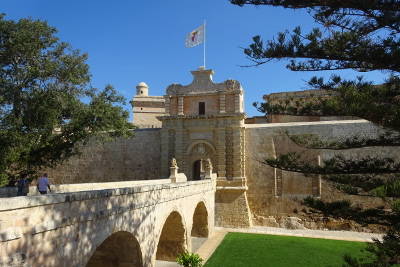 Arriving in the late afternoon and also finding that I had messed up my hotel bookings, forcing me to find another roof over my head for the first night, I didn't do much that first evening except to stroll around Sliema and find dinner.
Arriving in the late afternoon and also finding that I had messed up my hotel bookings, forcing me to find another roof over my head for the first night, I didn't do much that first evening except to stroll around Sliema and find dinner. Since the next day was Sunday, when one of the main sights of Valletta would be closed, I decided to take the bus to Mdina, Malta's first medieval capital, located on a high plateau in the middle of the island from which the locals could spot enemy ships approaching from every direction (well, it's a small island, really).
The perfectly preserved walled city of Mdina was not only incredibly beautiful as such, but was now of further interest to me as it doubled for King's Landing in the first season of Game of Thrones. Smart and well-organised as I am, I wrote down the exact places where scenes had been filmed, then forgot my notebook at the hotel. So except for Mdina's gorgeous entrance gate I missed any other spots in Mdina itself, but that didn't take away from my enjoyment of this lovely place:
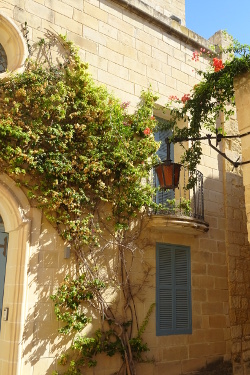 |
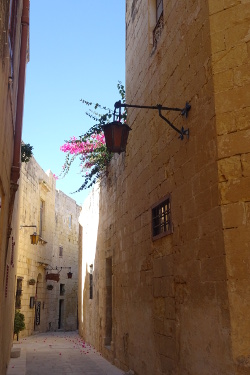 |
 |
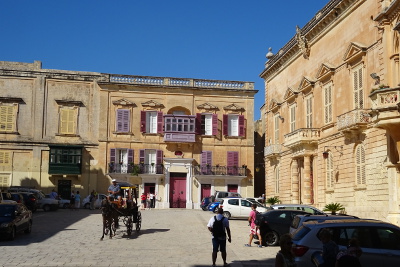
|
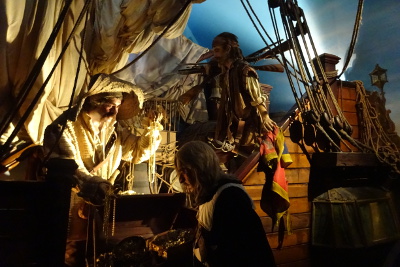 |
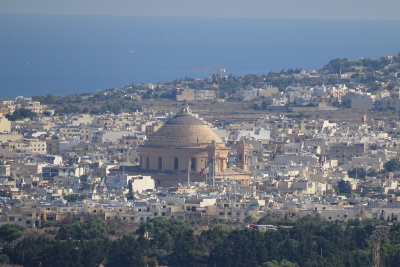 The amazing view from the town walls of Mdina and the great zoom capabilities of my new camera helped me to shoot this picture of the Santa Marija Assunta church in nearby Mosta, which prides itself with having the fourth-largest cupola in Christendom (after St. Peter and the Pantheon in Rome and Florence's Santa Maria del Fiore).
The amazing view from the town walls of Mdina and the great zoom capabilities of my new camera helped me to shoot this picture of the Santa Marija Assunta church in nearby Mosta, which prides itself with having the fourth-largest cupola in Christendom (after St. Peter and the Pantheon in Rome and Florence's Santa Maria del Fiore). Then after a nice lunch with a view, I headed back to Sliema (via Valletta, since I was in no mood to find out if and when a direct bus from Mdina to Sliema might turn up) to finally check into the lovely hotel I had initially booked and chill out by the pool for a while.
Next morning it was time to finally do Valletta properly, on my own time and terms, and armed with some historical background. From the bus terminal outside the mighty fortifications of Valletta I headed to the Upper Barrakka Gardens which offer the best view on Birgu and Senglea across the harbour where the knights made their heroic last stand in 1565. Note the huge Fort St. Angelo on the tip of Birgu, that still protects the harbour today. To the left, on the outermost peninsula of the grand harbour sits Fort Ricasoli, now used as film studios where everything from Gladiator to Troy and Game of Thrones have shot scenes:
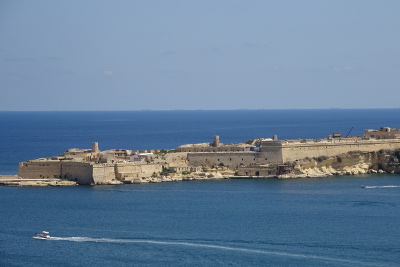
|
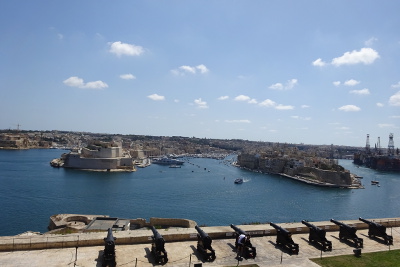 |
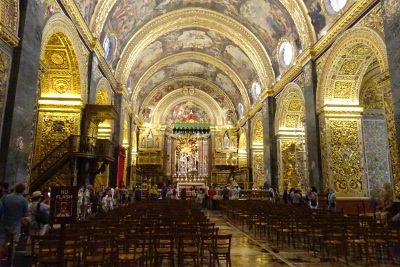 The "Order of the Knights of St. John" had started as one of the knightly orders of the Crusades (much like the more famous Templars) and after losing the holy land first settled down on the Greek island of Rhodes. The Ottomans drove them out in 1523 and the Spanish king decided to let them settle on Malta, which was little more than a dusty rock in the southern Mediterranean. They first settled down in the village of Birgu in the grand harbour and only after the great siege in 1565 built a completely new town on the barren slope of Mount Scibberas across the water - Valletta, named for their then Grandmaster Jean Parisot de la Valette who had seen them througuh the siege. Here they built a new cathedral, the monumentally impressive St. John's Co-Cathedral with its fabulous side chapels (one for each of the seven langues of the order) and Caravaggio's Beheading of St. John the Baptist.
The "Order of the Knights of St. John" had started as one of the knightly orders of the Crusades (much like the more famous Templars) and after losing the holy land first settled down on the Greek island of Rhodes. The Ottomans drove them out in 1523 and the Spanish king decided to let them settle on Malta, which was little more than a dusty rock in the southern Mediterranean. They first settled down in the village of Birgu in the grand harbour and only after the great siege in 1565 built a completely new town on the barren slope of Mount Scibberas across the water - Valletta, named for their then Grandmaster Jean Parisot de la Valette who had seen them througuh the siege. Here they built a new cathedral, the monumentally impressive St. John's Co-Cathedral with its fabulous side chapels (one for each of the seven langues of the order) and Caravaggio's Beheading of St. John the Baptist.
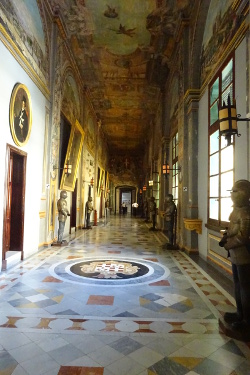 |
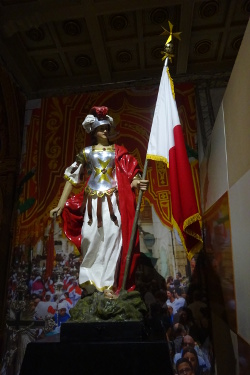 |
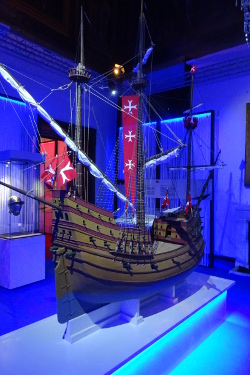 |
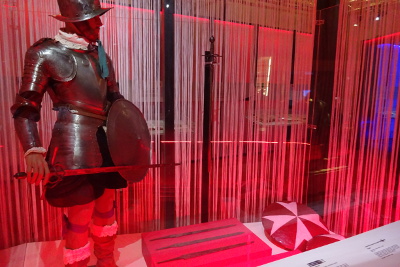
|
 |
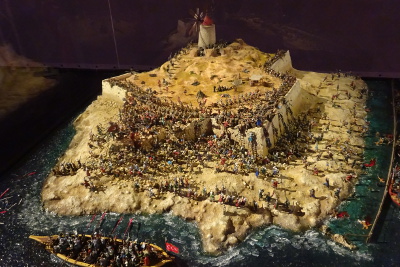
|
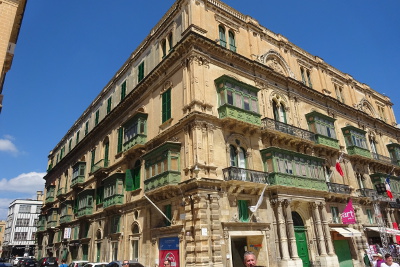 |
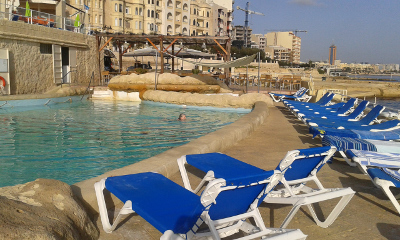
Knowing it would be my last chance to soak up some gorgeous sunshine for months to come and feeling like I had seen what I had missed the first time round, I ended up spending the last day by the hotel pool in Sliema. It bordered directly on the rocks that form the coast here, allowing some lovely dips into the cool Mediterranean as well. And while the rocky shore doesn't look too pretty, I realized it had one immense advantage: No sand getting bloody well everywhere.
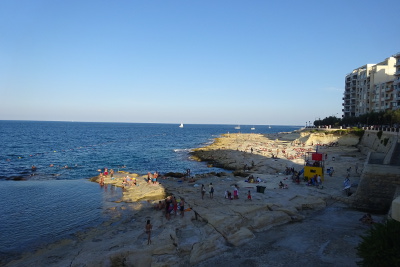
|
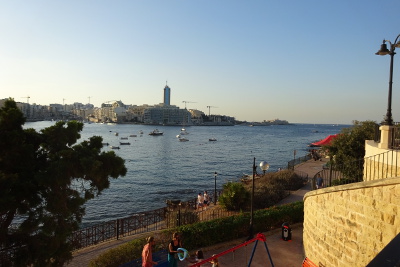 |
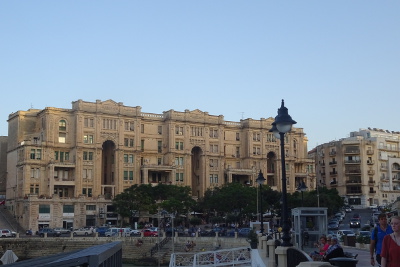
|
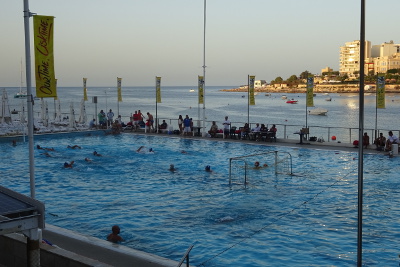 |
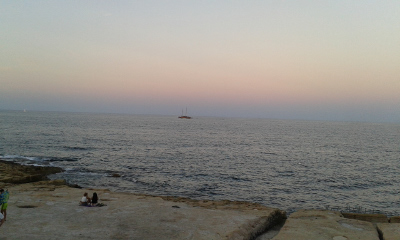
Malta certainly isn't pretty like the Balearics or the Greek islands - it's little more than a dusty rock with way too much ugly modern concrete everywhere, but I think it's a perfect destination to combine relaxing hours by the seaside with sightseeing and some incredible history and it's certainly worth more than a half-day outing as part of a typical Mediterranean cruise when the sheeple descend on the island en masse (three ships where in town on Sunday, so there were some groups in Mdina as well, but luckily no ships on Monday when I was in Valletta). I'm definitely glad I returned to see the island properly and make my peace with that ridiculous company outing back then.
Copyright © All Rights Reserved